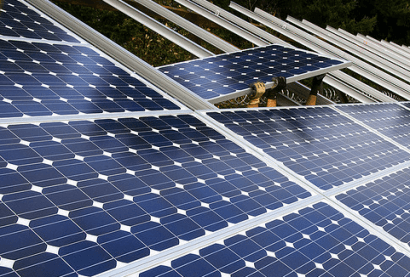
Even though the exact figures for installed capacity in May have not yet been published, the Federal Network Agency has announced in a recent press release that the estimated capacity installed in the last quarter means that the market did not meet expectations.
Germany's Renewable Energy Sources Act (EEG) reduces the feed-in tariffs for new renewables projects each year. This "degression" rate varies with technology and currently stands at 5% for new solar contracts per year. The degression is intended to account for lower costs as production volumes increase and the technology moves down the learning curve.
In the months March, April and May, months relevant for the calculation of this degression, 700 MWp came into operation. For the determination of the degression, installed capacity will be multiplied by a factor of four to calculate installations for the full year. With the calculation of 2,800 MWp, Germany remains below the threshold of 3,500 MWp.
As a consequence, degression expected at midyear by market observers will not take place. Matthias Kurth, president of the Federal Network Agency, speaks about “clarity as fast as possible” for market participants on the issues of installed capacities with the publication of the latest figures. It has now becoming clear which feed-in-tariff will apply for the rest of the year. In previous weeks, uncertainty surrounded the funding of photovoltaic systems. Further uncertainty emerged from the discussion on an amendment to the EEG, currently under negotiation in Berlin. Here, once again further cuts for solar technology are in the air.
However, at least for now, mid-year cuts are off the table due to the current figures published by the Federal Network Agency.
Weak demand expected to pick up
In the first four months of 2011, 24,921 plants with a total output of 711 MWp were registered. This represents a decline of 39% in terms of total capacity installed, and 51% in terms of the number of plants installed. This decline can be observed in all segments and regions. "We expected a weak start to the year and assumed a moderate degression to mid-year thus far”, commented Till von Versen, Analyst at consulting and research institute EuPD Research, on the current situation. “However, present figures underperformed expectations."
EuPD Research’s forecast for the first five months was 1,500 MWp, in comparison to the preliminary reported figure of 1,100 MWp. The company blames this tame start to the year on decreasing prices, in addition to the above mentioned uncertainty. "Customers postpone their installations from one month to the next in the hope that prices will decrease", explains von Versen.
Though the market appears to be picking up pace, it is with a delay of six weeks. EuPD Research expects a significant increase in reported output for the month of June. In the second half of the year, a highly dynamic market is expected that will accelerate even more due to zero degression. The market researcher assesses that the only factor limiting market growth will be the limited capacities of installers.
[Photo source: Flickr via OregonDOT]
For additional information:

